You will understand what the differences are between the types of solar battery, how they fit into a Solar System, cost, and brands.
In this article, you are going to learn all about Solar Batteries.
Here’s the breakdown:
- What Are Solar Batteries
- Fundamentals
- What Kind Are Best For Solar Power
- How To Size A Battery Bank
- Adding Up All The Data
- What Solar Battery Brands Are Best?
- How Much Do Solar Batteries Cost
- Frequently Asked Questions
- Ask A Question About Solar Batteries
Let’s get started.
Chapter 1
What Are Solar Batteries
Lets start at the beginning
However, solar batteries do not work on their own. They need other equipment to manage the charge and discharge rate, manage the overall health of your battery bank and convert DC stored power to AC power which we need to run our appliances.
You will typically use a solar battery in one of two instances, namely a Solar Power Kit or a Load Shedding Kit.
Load Shedding Kit
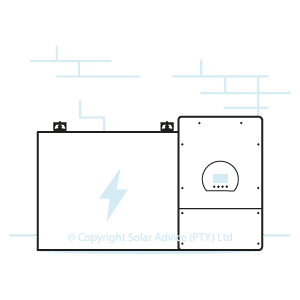
A Load Shedding Kit contains a Solar Inverter, a Battery Bank and peripherals like disconnect switches and wiring. There are no panels with a Load Shedding Kit. However, you can add panels later if you want to.
Solar Batteries store DC (Direct Current) power, but we use AC (Alternating Current) in our homes.
The inverter will convert the grid-supplied AC power to DC power when your battery is charging. And when using the power stored in your battery, the inverter will convert the DC power to usable AC power.
Solar Power Kit
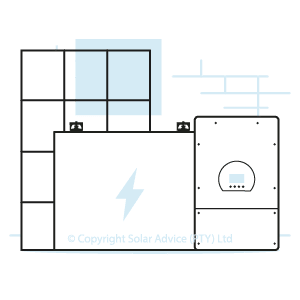
As the name suggests, a Solar Power Kit contains a Solar Inverter, Battery Bank, Peripherals and Solar Panels.
Solar Power Kits supplement your usage with freely produced solar power during the day and supply power during load shedding because you have a battery bank.
More often than not, your Solar Panels will charge your battery bank during the day so that you can use the stored solar power in the evenings and during grid failure.
Solar Power Kits will save you money on electricity where Load Shedding Kits will not.
If you’re not sure on your energy profile or you need to work out what size battery you need you can use a tool like EnergyBee to give you a comprehensive breakdown.
Chapter 2
Fundamentals
Solar lingo explained
Understanding the terms used in this guide is very important as they’ll help you understand what to look out for when sizing your own battery bank. If you know the basics, skip to Chapter 3.

What does Deep-Cycle mean?
You will hear the term “Deep-Cycle”, what this refers to is the Depth Of Discharge. Deep-Cycle Solar Batteries are specifically designed to regularly discharge until it has used most of its capacity.
The depth of discharge will depend on the type of battery you choose.

DOD
DOD (Depth of Discharge) refers to how much of the battery can be used.
A typical Lead-Acid Battery will have a DOD of 50%. Whereas with the Lithium-ion Solar Batteries have a DOD of between 80-100%, this is important to understand when calculating your solar battery needs.
Chapter 3
What Kinds Are Best For Solar Power?
In short, there are 2 main types of Solar Batteries, Lead Acid and Lithium-ion
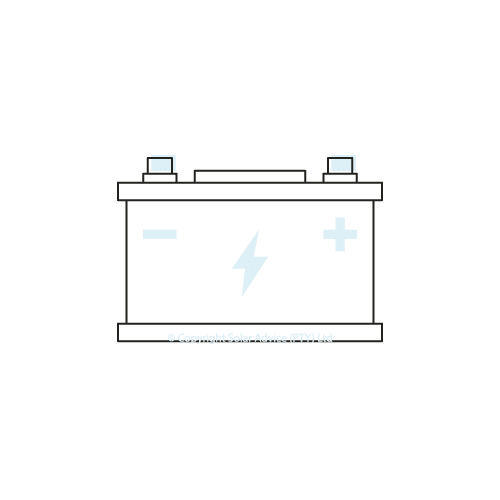
Sealed Lead Acid
An upgrade to the flooded version, Sealed Lead Acid eliminates the maintenance required compared to its counter partner.
It’s not without its drawbacks, however, a very short lifespan compared to that of the Lithium-ion Battery and they end up being more expensive in the long run due to the fact that they will need to be replaced in about 3 years time.
How do Lead Acid Batteries work?
AGM (Absorbent Glass Mat) are capable of handling higher temperatures with a lower self-discharge when they are idle. The cells have a lower resistance compared to conventional cells, they don’t leak and they don’t need to be in an upright position.
New AGM batteries cannot be connected in series to existing, older batteries as this will damage the newest addition.
Pros
- Completely sealed so no risk of acid leaks
- No maintenance is required
- Don’t have to be mounted upright
- Charge quicker with a lower voltage
- Lower initial cost
Cons
- Lifespan from around 3-5 years (depending on brand)
- Need to replace more frequently
- Only 50% depth of discharge is recommended
Lithium-ion
The most efficient battery on the market Lithium-ion battery technology is the future of solar storage. They waste significantly less power when charging and discharging. The cycle is deeper using more of their capacity with a long lifespan.
Completely maintenance-free they are lighter, smaller and they don’t produce as much heat as Lead Acid batteries and are perfect for setups that have space restrictions.
Easy, versatile Installation
Lithium-ion batteries come in a number of sizes and are easily installed. Should you need to add new batteries later, you’d simply need to add them to your existing battery pack.
Furthermore, you are able to choose how and where you’d like to install them. Lithium-ion batteries are available in wall-mounted, floor-mounted and rack-mounted options which give you the freedom of choice. For rack-mounted batteries, you also have the choice of a cabinet.
- Maintenance free
- Lighter and smaller
- Don’t have to be mounted upright
- Produce more cycles (6000 – 10000)
- Can produce 100% of the stored energy
- Lifespan from around 10-20 years
- High charging and discharging efficiency, more than 95%
- Highest cost
Chapter 4
How to Size a Battery Bank
In 3 easy steps
To begin, it’s a good idea to check the power ratings of your appliances. You have to make sure you have a large enough battery to accommodate your needs.
Let’s Start
Now to work out what size solar battery bank you’ll need, you’ll need to work out what you want to run off your battery and for how long you need to run these appliances.
There are three main questions you need to answer:
- What appliances need to run off the battery bank?
- For how long do these appliances need to run off the battery bank?
- Will your battery be used during load shedding, evenings, nights and mornings?
Whatever your answer is, you’ll be able to work out your kWh needs by following the steps in this section.
I’ll refer to load shedding, evenings, nights and mornings as ‘downtime(s)’ as this is the period you’ll not be producing solar power.
Step 1
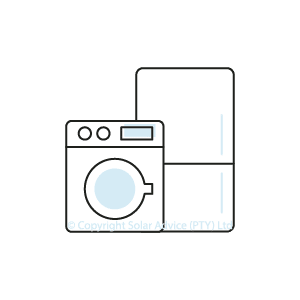
Add the power ratings of all the appliances you’d like to run off your solar battery bank.
As I have said, it is a good idea to check each of your appliances for their ratings to get an exact idea of your usage.
Step 2

Next, we’ll need to work out the amount of time you typically use these appliances.
You’ll use your appliances for varying amounts of time throughout the down phases. Like a TV might be on for 4 hours while your microwave is only on for 3 minutes.
This section is entirely reliant on your usage.
Step 3
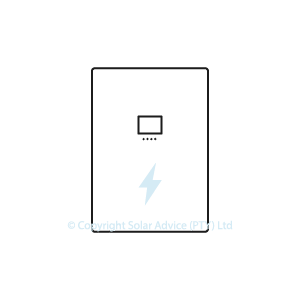
How will you use your solar battery? Load shedding? Non-production time? Both?
Non-Production Time Guidelines
Below are some guidelines for figuring out how many hours you’d like to run your appliances off your battery bank.
Load Shedding Usage

In some areas, they can expect 2.5 hours of load shedding, and in other areas, they can have up to 4 hours of load shedding. It’s essential to consider these times.
Evening Usage

The average evening usage is around 4 hours for appliances that we use when we’re awake from when we come home from work till the time we go to bed. We’ll work from 18:00 to 22:00.
Nighttime Usage

Say you’re getting in a good night sleep at the recommended 8 hours a night. Most of us still run a few essential appliances like fridges, alarms etc.
Morning Usage

We use a lot of power in the mornings because we use appliances like kettles, toasters, microwaves and hairdryers. All of these appliances pull large amounts of power.
Usually, between 06:00 and 10:00, we don’t produce enough solar power to supplement our load. Therefore, it is beneficial to have a big enough battery to cover as much of our usage in the morning as possible.
As a rule of thumb, we suggest being mindful of what you are running off your battery bank, but mornings are different because who wants to start their day de-caffeinated with a severe case of bedhead?
Chapter 5
Adding Up All The Data
Now we get to the fun part: working out our usage!
Below, I’ll give you an example based on my home and the appliances we own with their ratings, how many times we use them, and how long we use them in 16 hours.
I have broken them down into three sections.
- Mornings
- Evenings
- Nights
Mornings
| Appliance | Watts | Number of uses | Duration of usage | Total Watts |
| Espresso Machine | 1450W | 2 | 10 minutes | 484W |
| Toaster | 850W | 1 | 3 minutes | 43W |
| Microwave | 1200W | 1 | 1 minute | 20W |
| Hairdryer | 1000W | 1 | 10 minutes | 166W |
| LED Lights x 10 @ 5W each | 50W | 1 | 3 hours | 150W |
| TV x 2 @ 160W each | 320W | 1 | 2 hours | 640W |
| Fridge Freezer | 150W | 1 | 4 hours | 600W |
| Alarm | 6W | 1 | 1 hour | 6W |
| Modem | 10W | 1 | 4 hours | 40W |
| Heat Pump | 1250W | 1 | 1 hour | 1250W |
| Total | 3399W | |||
Evenings
| Appliance | Watts | Number of uses | Duration of usage | Total Watts |
| Toaster | 850W | 1 | 3 minutes | 43W |
| Microwave | 1200W | 2 | 3 minutes | 120W |
| LED Lights x 10 @ 5W each | 50W | 1 | 4 hours | 200W |
| TV x 2 @ 160W each | 320W | 1 | 4 hours | 1280W |
| Fridge Freezer | 150W | 1 | 4 hours | 600W |
| Modem | 10W | 1 | 4 hours | 40W |
| Heat Pump | 1250W | 1 | 1 hour | 1250W |
| Total | 3533W | |||
Nights
| Appliance | Watts | Number of uses | Duration of usage | Total Watts |
| Fridge Freezer | 150W | 1 | 8 hours | 1200W |
| Modem | 10W | 1 | 8 hours | 80W |
| Alarm | 6W | 1 | 8 hour | 48W |
| Phone Chargers x 4 @ 20W each | 40W | 1 | 2 hours | 80W |
| Laptop Chargers x 2 @ 45W each | 90W | 1 | 3 hours | 270W |
| Total | 1678W | |||
Case Study Findings
Now that we have totals for each time frame, we can determine my family’s overall usage and battery needs to cover 100% of our load using our solar battery bank.
We’ll add all three totals together: 8610W or 8.61kW.
To choose a battery, I’ll need to consider the battery’s DOD (Depth of Discharge). If I choose a battery with 80% DOD, I’ll need to subtract 20% from the overall rating of the battery.
I could consider these options from PylonTech or a Dyness to cover my usage completely:
Chapter 6
What Solar Battery Brands Are Best?
Here’s a selection of brands which we recommend
As with the other components, the brand of the battery is closely related to the quality of the product, Solar Batteries are no different in this regard.
PylonTech

Pylontech’s battery products and solutions have been used for high-end vehicles, cloud computing systems and telecom power backups, new energy storage systems and electric vehicles.
Top features:
- Innovative
- High Quality
- Specialise in Lithium technology
- Used by companies such as Apple
- Award-winning
- Great value for money
Dyness
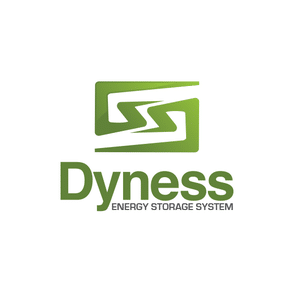
They have a sophisticated team of Lithium-ion experts with a specialist R&D team.
Also used in various sectors the Dyness range suits Solar applications like a glove, their PowerBox module is a big hit due to its aesthetically pleasing design at a fantastic price point.
Top features:
- Innovative
- High Quality
- Specialise in Lithium technology
- Well designed Wall Units
- 10-Year Warranty
- Great value for money
Chapter 7
How Much Do Solar Batteries Cost
What you can expect to pay

We all know that the initial solar battery prices in South Africa are pretty high. But if you’re cycling a battery bank once a day and have 6000 cycles, that gives you over 16 years of battery life.
Lithium-ion Battery prices range from just under R17,000 for a single modular battery and upwards of R53,000 for large battery banks with multiple batteries.
Below is a comparison table of lithium-ion and lead-acid 9.6kWh / 200Ah solar battery prices:
Lithium-ion |
Lead-Acid |
|
| Size | 9.6kWh 48V (9.12kWh Usable) | 9.6kWh 48V (4.8kWh Usable) |
| DOD | 95% | 50% |
| Cycles | 6000 6000 / 365 = 16.44 (Cycles / 1 year = Lifespan) |
1350 1350 / 365 = 3.70 (Cycles / 1 year = Lifespan) |
| Average Cost | R 61,300 | R 19,100 |
| Cost Per kWh | R 6.72 (R 61,300 / 9120W) |
R 3.98 (R 19,100.00 / 4800W) |
| Cost Per Year | R 3,728.71 (R 61,300 / 16.44 years) |
R 5,162.16 (R 19,100 / 3.70) |
| Cost Per Day | R 10.22 (R 3,728.71 / 365 days) |
R 14,14 (R 5,162.16 / 365 days) |
You would need to replace your AGM battery bank 3 times to match the number of years that the Lithium-ion batteries give you. You will eventually spend R76,400.00 on your AGM batteries in total.
While a lithium battery price may be a significant amount to front initially, as you can see, the cost per cycle is highly affordable. And if you’re storing and using solar power rather than the grid, you’ll be saving money.
Chapter 8
FAQ
Frequently Asked Questions
Which solar battery is the best?
A lithium-ion battery is the best solar battery available because it has a longer life span and a greater depth of discharge than the AGM / gel battery variety.
When it comes to brand, stick to reputable brands like PylonTech, Dyness, Greenrich and Hubble. These brands are some of South Africa’s favourites because they are of excellent quality.
How long will my solar battery last?
How long a solar battery will last depends on the size of your battery and what you are running off of it.
The kWh rating is how many hours you have to run 1kW worth of appliances.
Here is how long a 4.8kWh battery (3.84kWh at 80% DOD) will last running 500W, 750W, 1kW and 2kW:
500W – 7.6 hours
750W – 5 hours
1kW – 3.8 hours
2kW – 1.9 hours
How to charge solar batteries?
Solar batteries are charged using either solar power or grid power. The power from these sources is fed through the inverter and then into your battery bank.
When you are ready to use the stored power, it is fed back through the inverter and into your distribution board, where it will be used to power your essential appliances.[endfaqmicro]
How many solar batteries to run a house?
The number of solar batteries needed to run a house depends on your essential appliances list, and the amount of time you will run these appliances.
Below is a list of battery sizes and the sized homes they suit.
3.5kWh – 4.8kWh – Small to medium
4.8kWh – 5.8kWh – Medium
5.8kWh – 10.1kWh+ – Large to extra large[endfaqmicro]
How much are solar batteries?
Solar batteries range in price from around R2500 for a 100Ah AGM battery and upwards of R50,000 for singular 9.6kWh – 10.1kWh batteries, as your add more batteries to a battery bank, the price increases.[endfaqmicro]
Ask A Question About Solar Batteries
If you have a question feel free to add a comment below or contact us directly.
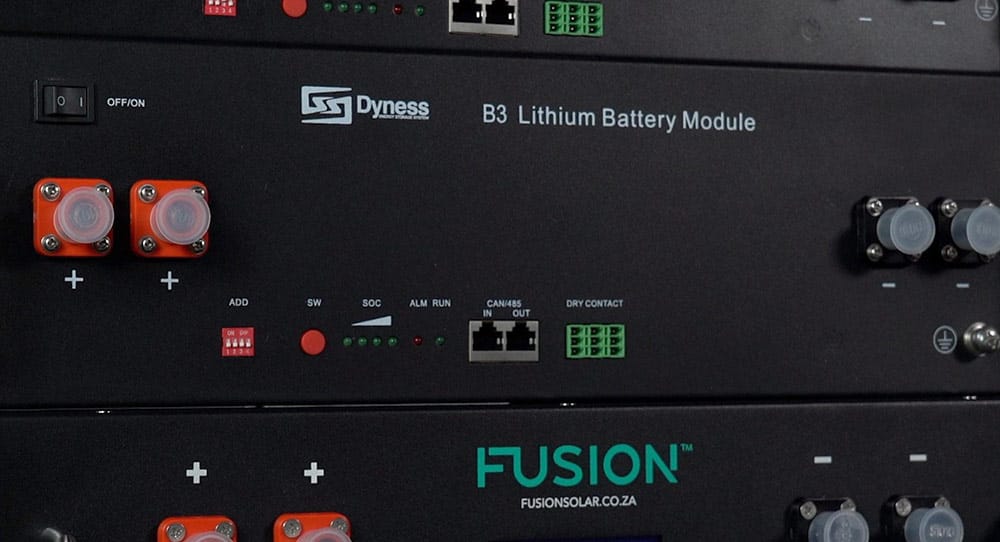
Visitor Rating: 4 Stars
Visitor Rating: 5 Stars
Hi. A cycle on the lithium batteries. How’s the cycle calculated? For example, if the battery was 20% discharged, then charged again, is that a cycle or not?
Thx
Hi, if the battery is 80% DOD and it goes from 100% to 20% that would be 1 cycle, if it went to half that then that would be half a cycle.
Hope that answers your question.
Fantastic information. Clearly explained. Thank you.
What an excellent write up.
Sufficient valuable information here for me to make a decision on my battery.